- Home
- Mark Twain
Autobiography Of Mark Twain, Volume 1 Page 2
Autobiography Of Mark Twain, Volume 1 Read online
Page 2
Scholars and archivists at other institutions have been vital to editorial work on this volume. Barbara Schmidt, an independent scholar who maintains an invaluable website (www.twainquotes.com) for Mark Twain research, tops our list when it comes to information and documentation freely and generously volunteered. For this particular volume she also provided us with photocopies of important original documents not previously known to us. Kevin Mac Donnell, an expert dealer and collector of Mark Twain documents, has as always been generous in sharing his extensive collection. Photographs and other documentation were also provided by the following, to whom we express our thanks: Lee Brumbaugh of the Nevada Historical Society, Reno; Christine Montgomery of The State Historical Society of Missouri, Columbia; Patti Philippon of the Mark Twain House and Museum, Hartford; and Henry Sweets of the Mark Twain Boyhood Home and Museum, Hannibal. At our own university, we are grateful to Dan Johnston of the Digital Imaging Laboratory for generating superb digital files from negatives of rare photographs. We would also like to thank the following archivists who generously assisted us in our research: Louise A. Merriam of the Andersen Library, University of Minnesota; Eva Guggemos of the Beinecke Library at Yale University; and Kathleen Kienholz of the American Academy of Arts and Letters, New York. Patricia Thayer Muno and James R. Toncray contributed important information about their families.
We are grateful for the tireless help of Kathleen MacDougall, our highly skilled copy editor and project manager at UC Press, who contributed much to the accuracy of the editorial matter and was a guiding hand at every stage of the production process. We thank Sandy Drooker, who designed the book and the dust jacket with her usual consummate skill. As of old, we again thank Sam Rosenthal, who expertly supervised the printing and binding process, and Laura Cerruti, our sponsoring editor, whose enthusiasm and support for this edition were essential to its publication.
All volumes produced by the Mark Twain Project are the products of complex and sustained collaboration. The student employees listed on page iii as Contributing Editors carried out much of the preliminary work of transcribing, proofreading, and collating the source documents that form the basis of the critical text. Associate editors Benjamin Griffin, Victor Fischer, and Michael B. Frank contributed to every aspect of the editorial work. They carried out original research for and drafted much of the annotation, and helped with the painstaking preparation and checking required to produce accurate texts, apparatus, and index. Associate editors Sharon K. Goetz and Leslie Diane Myrick brought their unmatched technical expertise and innovative programming to bear on the challenge of publishing this edition simultaneously in print and on Mark Twain Project Online (www.marktwainproject.org). None of us would be able to edit as we do without the Project’s administrative assistant, Neda Salem, who skillfully held the bureaucracy at bay and patiently answered the myriad requests for information and copies of documents which the Project receives from scholars and the general public.
We wish to express special gratitude to my colleague Lin Salamo, who retired from the Project before this volume was completed. After more than two decades of dedicated editorial work, she contributed to this edition what is arguably her most significant professional accomplishment—reassembling and analyzing the hundreds of typescript pages that make up the Autobiographical Dictations. Her research was the indispensable key to our new understanding of Mark Twain’s plan for his autobiography.
H. E. S.
INTRODUCTION
Between 1870 and 1905 Mark Twain (Samuel L. Clemens) tried repeatedly, and at long intervals, to write (or dictate) his autobiography, always shelving the manuscript before he had made much progress. By 1905 he had accumulated some thirty or forty of these false starts—manuscripts that were essentially experiments, drafts of episodes and chapters; many of these have survived in the Mark Twain Papers and two other libraries. To some of these manuscripts he went so far as to assign chapter numbers that placed them early or late in a narrative which he never filled in, let alone completed. None dealt with more than brief snatches of his life story.
He broke this pattern in January 1906 when he began almost daily dictations to a stenographer. He soon decided that these Autobiographical Dictations would form the bulk of what he would call the Autobiography of Mark Twain. Within a few months he reviewed his accumulation of false starts and decided which to incorporate into the newer dictation series and which to leave unpublished. By the time he had created more than two hundred and fifty of these almost daily dictations (and written a final chapter in December 1909, about the recent death of his daughter Jean), he had compiled more than half a million words. He declared the work done, but insisted that it should not be published in its entirety until a hundred years after his death, which occurred less than four months later, on 21 April 1910.
This belated success with a project that had resisted completion for thirty-five years can be traced to two new conditions. First, he had at last found a skilled stenographer who was also a responsive audience—Josephine S. Hobby—which encouraged him to embrace dictation as the method of composition, something he had experimented with as early as 1885. Second, and just as important, dictating the text made it easier to follow a style of composition he had been drifting toward for at least twenty years. As he put it in June 1906, he had finally seen that the “right way to do an Autobiography” was to “start it at no particular time of your life; wander at your free will all over your life; talk only about the thing which interests you for the moment; drop it the moment its interest threatens to pale, and turn your talk upon the new and more interesting thing that has intruded itself into your mind meantime.”1
Combining dictation and discursiveness in this bold way was unexpectedly liberating, in large part because it produced not a conventional narrative marching inexorably toward the grave, but rather a series of spontaneous recollections and comments on the present as well as the past, arranged simply in the order of their creation. The problem of method had been solved. It was also liberating to insist on posthumous publication, but that idea had been around from the start and was closely tied to Clemens’s ambition to tell the whole truth, without reservation. As he explained to an interviewer in 1899: “A book that is not to be published for a century gives the writer a freedom which he could secure in no other way. In these conditions you can draw a man without prejudice exactly as you knew him and yet have no fear of hurting his feelings or those of his sons or grandsons.” Posthumous publication was also supposed to make it easier for Clemens to confess even shameful parts of his own story, but that goal proved illusory. In that same 1899 interview he admitted that a “man cannot tell the whole truth about himself, even if convinced that what he wrote would never be seen by others.”2
But if delaying publication failed to make him into a confessional autobiographer, it did free him to express unconventional thoughts about religion, politics, and the damned human race, without fear of ostracism. In January 1908 he recalled that he had long had “the common habit, in private conversation with friends, of revealing every private opinion I possessed relating to religion, politics, and men”—adding that he would “never dream of printing one of them.”3 The need to defer publication of subversive ideas seemed obvious to him. “We suppress an unpopular opinion because we cannot afford the bitter cost of putting it forth,” he wrote in 1905. “None of us likes to be hated, none of us likes to be shunned.”4 So having the freedom to speak his mind (if not confess his sins) was still ample justification for delaying publication until after his death.
Seven months after he began the Autobiographical Dictations in 1906, however, Clemens did permit—indeed actively pursued—partial publication of what he had so far accumulated. He supervised the preparation of some twenty-five short extracts from his autobiographical manuscripts and dictations for publication in the North American Review, each selection deliberately tamed for that time and audience, and each prefaced by a notice: “No part of the autobiography will be publishe
d in book form during the lifetime of the author.”5 But not long after Clemens died, his instruction to delay publication for a hundred years began to be ignored—first in 1924 by Albert Bigelow Paine, Mark Twain’s official biographer and first literary executor, then in 1940 by Paine’s successor, Bernard DeVoto, and most recently by Charles Neider in 1959.
Each of these editors undertook to publish only a part of the text, and none ventured to do so in the way that Clemens actually wanted it published. Paine began his two-volume edition with all but a handful of the manuscripts and dictations carried out before 1906, as well as several texts that were probably never part of those early experiments. He arranged all of them “in accordance with the author’s wish . . . in the order in which they were written, regardless of the chronology of events.”6 It now seems clear that Paine’s understanding of “the author’s wish” was mistaken: Clemens never intended to include all those false starts, let alone in chronological order; he intended only the dictations begun in 1906 to be published that way. But having chosen this course, Paine then had space for only a relative handful of the dictations. And on top of that, he felt obliged to suppress or even alter certain passages without notice to the reader. He eventually acknowledged that he had published only about one-third of what he regarded as the whole text.7
DeVoto was critical of Paine’s acceptance of “the arrangement Mark Twain originally gave” the dictations, “interspersed as they were with trivialities, irrelevancies, newspaper clippings, and unimportant letters—disconnected and without plan.” Instead he chose to print only passages that Paine had left unpublished, drawn from “the typescript in which everything that Mark wanted in his memoirs had been brought together” (that is, the Autobiographical Dictations begun in 1906). DeVoto then arranged the selections by topic, “omitting trivialities and joining together things that belonged together.” And he said with great satisfaction that he had “modernized the punctuation by deleting thousands of commas and dashes, and probably should have deleted hundreds more.” He was confident that he had “given the book a more coherent plan than Mark Twain’s” and he was unapologetic about having “left out” what seemed to him “uninteresting.”8
Neider, too, was unhappy with Paine’s acceptance of Mark Twain’s plan to publish the autobiography “not in chronological order but in the sequence in which it was written and dictated. What an extraordinary idea! As though the stream of composition time were in some mysterious way more revealing than that of autobiographical time!”9 Neider had permission from the Mark Twain Estate to combine some thirty thousand words from the unpublished dictations with what Paine and DeVoto had already published. Like DeVoto, he omitted what he disliked, and was also obliged to exclude portions that Clara Clemens Samossoud (Clemens’s daughter, by then in her eighties) disapproved of publishing. He then (figuratively) cut apart and rearranged the texts he had selected so that they approximated a conventional, chronological narrative—exactly the kind of autobiography Mark Twain had rejected.
The result of these several editorial plans has been that no text of the Autobiography so far published is even remotely complete, much less completely authorial. It is therefore the goal of the present edition to publish the complete text as nearly as possible in the way Mark Twain intended it to be published after his death. That goal has only recently become attainable, for the simple reason that no one knew which parts of the great mass of autobiographical manuscripts and typescripts Mark Twain intended to include. In fact, the assumption had long prevailed that Mark Twain did not decide what to put in and what to leave out—that he left the enormous and very complicated manuscript incomplete and unfinished.
That assumption was wrong. Although Mark Twain left no specific instructions (not even documentation for the instructions that Paine professed to follow), hidden within the approximately ten file feet of autobiographical documents are more than enough clues to show that he had in fact decided on the final form of the Autobiography, and which of the preliminary experiments were to be included and which omitted. This newly discovered and unexpected insight into his intentions is itself a story worth telling, and it is told for the first time in this introduction.
Three printed volumes are planned for this edition, which will also be published in full at Mark Twain Project Online (MTPO). Exhaustive documentation of all textual decisions will only be published online.10 This first volume begins with the extant manuscripts and dictations that must now be regarded as Clemens’s preliminary efforts to write the autobiography and that he reviewed and rejected (but did not destroy) in June 1906. They are arranged arbitrarily in the order of their date of composition, solely because Clemens himself never specified any order. Some of these texts he explicitly labeled “autobiography,” and some are judged to be part of his early experiments on other grounds, always explained in the brief headnotes that introduce them. We include those preliminary texts for which the evidence is reasonably strong, without asserting that there were no others.
The Autobiography of Mark Twain proper begins on p. 201 in this volume, starting with the several prefaces Clemens created in June 1906 to frame the early manuscripts and dictations he had selected as opening texts, followed by his almost daily Autobiographical Dictations from 9 January through the end of March 1906—all that will fit into this volume. The dictations are arranged in the chronological order of their creation because that is how Clemens instructed his editors to publish them. The remaining volumes in this edition will include all the dictations he created between April 1906 and October 1909, likewise arranged chronologically, the whole concluding with the “Closing Words of My Autobiography,” a manuscript about the death of his youngest daughter, Jean.
PRELIMINARY MANUSCRIPTS AND DICTATIONS
Autobiographical Fiction and Fictional Autobiography
Autobiography as a literary form had a special fascination for Mark Twain. Long before he had given serious thought to writing his own, he had published both journalism and fiction that were, in the most straightforward way, autobiographical. From the earliest juvenilia in his brother’s Hannibal, Missouri, newspaper (1851–53) to his personal brand of journalism in Nevada and California (1862–66), he played endlessly with putting himself at the center of what he wrote. Twenty years and nine books later, in October 1886, he acknowledged (and oversimplified) the result: “Yes, the truth is, my books are simply autobiographies. I do not know that there is an incident in them which sets itself forth as having occurred in my personal experience which did not so occur. If the incidents were dated, they could be strung together in their due order, & the result would be an autobiography.”11 He was thinking of his travel books and personal narratives—The Innocents Abroad, Roughing It, A Tramp Abroad, and Life on the Mississippi—the only books up to that point in which he set forth anything “as having occurred” in his own experience. To be sure he also made extensive fictional use of that experience. The factual basis of characters and situations in works like The Gilded Age, The Adventures of Tom Sawyer, and Adventures of Huckleberry Finn has been thoroughly documented, and the autobiographical content is obvious in dozens of shorter works like “The Private History of a Campaign That Failed” and “My First Lie and How I Got Out of It,” even when they are not entirely factual.12
More germane to Clemens’s thinking about his own autobiography is his interest in fictional autobiography—that is, fictions in the shape and form of an autobiography. Mark Twain’s (Burlesque) Autobiography was written in late 1870 and published in pamphlet form in March 1871. Mark Twain tells us that his own parents were “neither very poor nor conspicuously honest,” and that almost all of his ancestors were born to be hanged—and for the most part were hanged. An even briefer “burlesque” called simply “An Autobiography” appeared in the Aldine magazine in April 1871: “I was born November 30th, 1835. I continue to live, just the same.”13 The whole sketch takes fewer than two hundred words and pointedly leaves the reader as ignorant of the facts as before.
Burlesque implies familiarity with genuine autobiographies, despite what Clemens told William Dean Howells in 1877 (“I didn’t know there were any but old Franklin’s & Benvenuto Cellini’s”). Benjamin Franklin’s didactic bent made him a lifelong target of Mark Twain’s ridicule. But he thought Cellini’s autobiography the “most entertaining of books,” and he admired the daring frankness of Jean-Jacques Rousseau’s Confessions and Giovanni Giacomo Casanova’s Mémoires, as well as Samuel Pepys’s Diary, which Paine said was the book Clemens “read and quoted most.”14
In 1871 he proposed writing “an Autobiography of Old Parr, the gentleman who lived to be 153 years old,” but apparently he never did so.15 In the summer of 1876 he wrote four hundred pages of a work he was then calling “Huck Finn’s Autobiography.” And in March 1877, he told Howells he was writing such a work about his own older brother: “I began Orion’s autobiography yesterday & am charmed with the work. I have started him at 18, printer’s apprentice, soft & sappy, full of fine intentions & shifting religions & not aware that he is a shining ass.” He assigned various real incidents of Orion’s life and aspects of his character to an apprentice named Bolivar, and wrote more than a hundred pages before abandoning the project.16
In 1880, Orion’s decision to write a real autobiography prompted Clemens to suggest that he instead “write two books which it has long been my purpose to write, but I judge they are so far down on my docket that I shan’t get to them in this life. I think the subjects are perfectly new. One is ‘The Autobiography of a Coward,’ & the other ‘Confessions of a Life that was a Failure.’ ” The object here was not burlesque, but rather a kind of thought experiment to test the difficulty of telling the whole truth in an autobiographical narrative—in this case, by shielding it behind a deliberate fiction.

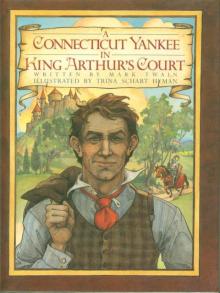 A Connecticut Yankee in King Arthur's Court
A Connecticut Yankee in King Arthur's Court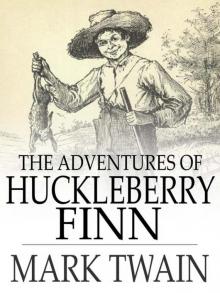 Adventures of Huckleberry Finn
Adventures of Huckleberry Finn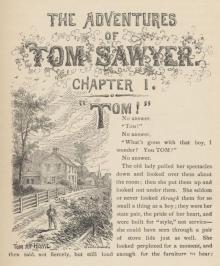 The Adventures of Tom Sawyer, Part 1.
The Adventures of Tom Sawyer, Part 1.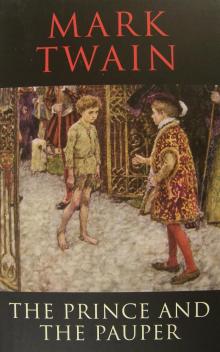 The Prince and the Pauper
The Prince and the Pauper The American Claimant
The American Claimant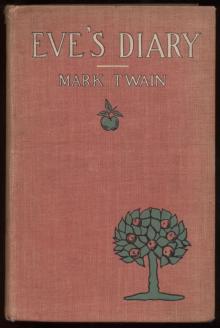 Eve's Diary, Complete
Eve's Diary, Complete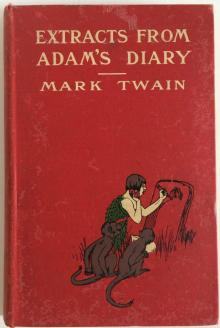 Extracts from Adam's Diary, translated from the original ms.
Extracts from Adam's Diary, translated from the original ms.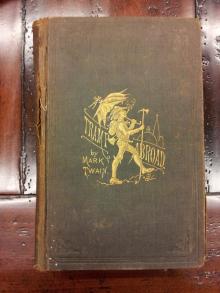 A Tramp Abroad
A Tramp Abroad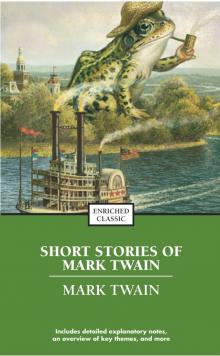 The Best Short Works of Mark Twain
The Best Short Works of Mark Twain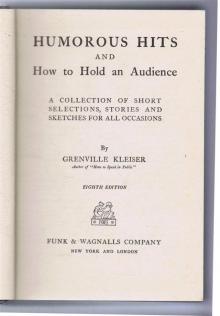 Humorous Hits and How to Hold an Audience
Humorous Hits and How to Hold an Audience The Speculative Fiction of Mark Twain
The Speculative Fiction of Mark Twain The Facts Concerning the Recent Carnival of Crime in Connecticut
The Facts Concerning the Recent Carnival of Crime in Connecticut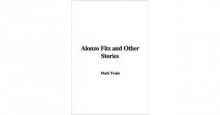 Alonzo Fitz, and Other Stories
Alonzo Fitz, and Other Stories The $30,000 Bequest, and Other Stories
The $30,000 Bequest, and Other Stories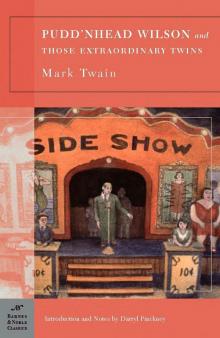 Pudd'nhead Wilson and Those Extraordinary Twins
Pudd'nhead Wilson and Those Extraordinary Twins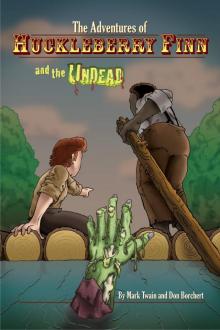 The Adventures of Huckleberry Finn and the Undead
The Adventures of Huckleberry Finn and the Undead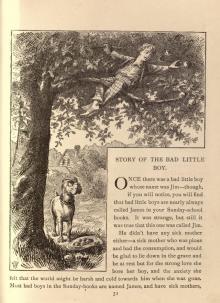 Sketches New and Old
Sketches New and Old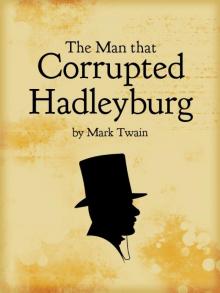 The Man That Corrupted Hadleyburg
The Man That Corrupted Hadleyburg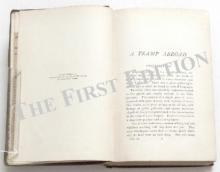 A Tramp Abroad — Volume 06
A Tramp Abroad — Volume 06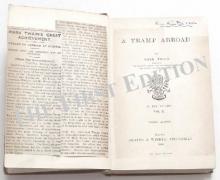 A Tramp Abroad — Volume 02
A Tramp Abroad — Volume 02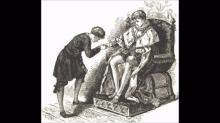 The Prince and the Pauper, Part 1.
The Prince and the Pauper, Part 1. Adventures of Huckleberry Finn, Chapters 16 to 20
Adventures of Huckleberry Finn, Chapters 16 to 20 The Prince and the Pauper, Part 9.
The Prince and the Pauper, Part 9.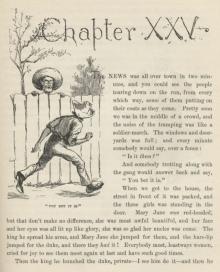 Adventures of Huckleberry Finn, Chapters 21 to 25
Adventures of Huckleberry Finn, Chapters 21 to 25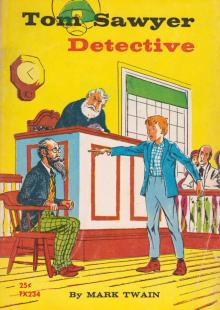 Tom Sawyer, Detective
Tom Sawyer, Detective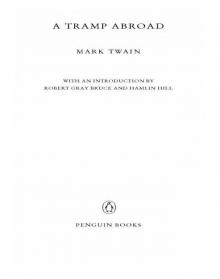 A Tramp Abroad (Penguin ed.)
A Tramp Abroad (Penguin ed.)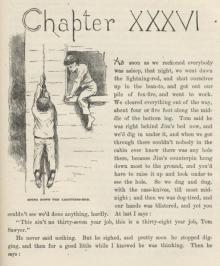 Adventures of Huckleberry Finn, Chapters 36 to the Last
Adventures of Huckleberry Finn, Chapters 36 to the Last The Mysterious Stranger, and Other Stories
The Mysterious Stranger, and Other Stories A Tramp Abroad — Volume 03
A Tramp Abroad — Volume 03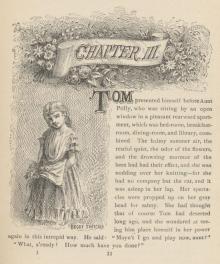 The Adventures of Tom Sawyer, Part 3.
The Adventures of Tom Sawyer, Part 3. Adventures of Huckleberry Finn, Chapters 06 to 10
Adventures of Huckleberry Finn, Chapters 06 to 10_preview.jpg) The Adventures of Huckleberry Finn (Tom Sawyer's Comrade)
The Adventures of Huckleberry Finn (Tom Sawyer's Comrade)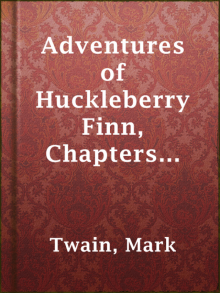 Adventures of Huckleberry Finn, Chapters 31 to 35
Adventures of Huckleberry Finn, Chapters 31 to 35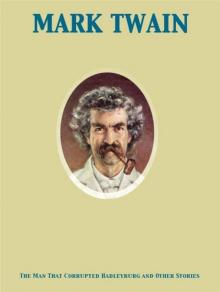 The Man That Corrupted Hadleyburg, and Other Stories
The Man That Corrupted Hadleyburg, and Other Stories A Tramp Abroad — Volume 07
A Tramp Abroad — Volume 07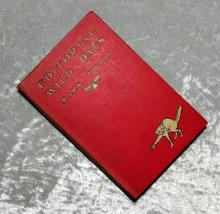 Editorial Wild Oats
Editorial Wild Oats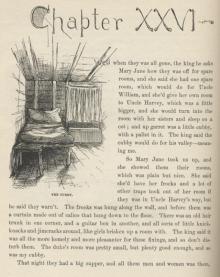 Adventures of Huckleberry Finn, Chapters 26 to 30
Adventures of Huckleberry Finn, Chapters 26 to 30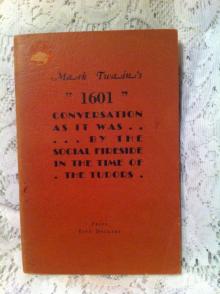 1601: Conversation as it was by the Social Fireside in the Time of the Tudors
1601: Conversation as it was by the Social Fireside in the Time of the Tudors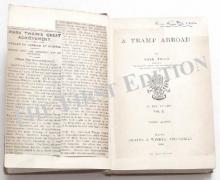 A Tramp Abroad — Volume 05
A Tramp Abroad — Volume 05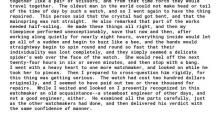 Sketches New and Old, Part 1.
Sketches New and Old, Part 1.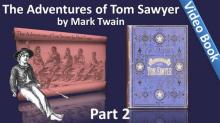 The Adventures of Tom Sawyer, Part 2.
The Adventures of Tom Sawyer, Part 2.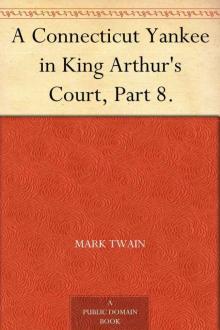 A Connecticut Yankee in King Arthur's Court, Part 8.
A Connecticut Yankee in King Arthur's Court, Part 8. A Tramp Abroad — Volume 01
A Tramp Abroad — Volume 01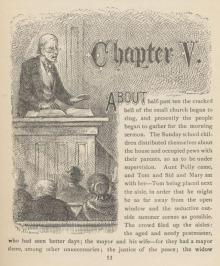 The Adventures of Tom Sawyer, Part 5.
The Adventures of Tom Sawyer, Part 5. Adventures of Huckleberry Finn, Chapters 01 to 05
Adventures of Huckleberry Finn, Chapters 01 to 05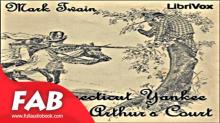 A Connecticut Yankee in King Arthur's Court, Part 1.
A Connecticut Yankee in King Arthur's Court, Part 1.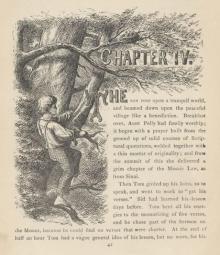 The Adventures of Tom Sawyer, Part 4.
The Adventures of Tom Sawyer, Part 4. A Connecticut Yankee in King Arthur's Court, Part 2.
A Connecticut Yankee in King Arthur's Court, Part 2.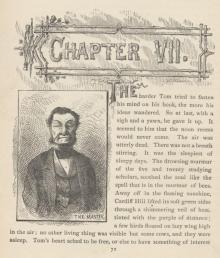 The Adventures of Tom Sawyer, Part 7.
The Adventures of Tom Sawyer, Part 7. A Connecticut Yankee in King Arthur's Court, Part 3.
A Connecticut Yankee in King Arthur's Court, Part 3.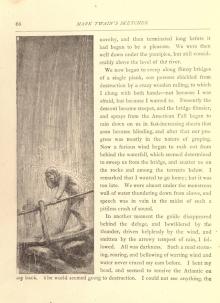 Sketches New and Old, Part 4.
Sketches New and Old, Part 4.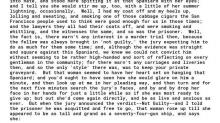 Sketches New and Old, Part 3.
Sketches New and Old, Part 3. A Connecticut Yankee in King Arthur's Court, Part 7.
A Connecticut Yankee in King Arthur's Court, Part 7. A Connecticut Yankee in King Arthur's Court, Part 5.
A Connecticut Yankee in King Arthur's Court, Part 5. A Connecticut Yankee in King Arthur's Court, Part 6.
A Connecticut Yankee in King Arthur's Court, Part 6. A Connecticut Yankee in King Arthur's Court, Part 4.
A Connecticut Yankee in King Arthur's Court, Part 4. Sketches New and Old, Part 2.
Sketches New and Old, Part 2.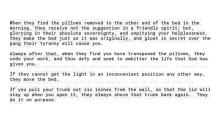 Sketches New and Old, Part 6.
Sketches New and Old, Part 6. Adventures of Huckleberry Finn, Chapters 11 to 15
Adventures of Huckleberry Finn, Chapters 11 to 15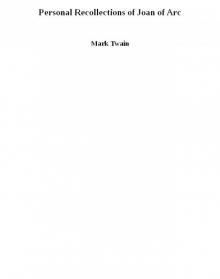 Personal Recollections of Joan of Arc
Personal Recollections of Joan of Arc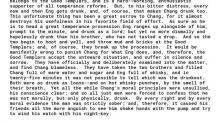 Sketches New and Old, Part 5.
Sketches New and Old, Part 5. Eve's Diary, Part 3
Eve's Diary, Part 3 Sketches New and Old, Part 7.
Sketches New and Old, Part 7. Mark Twain on Religion: What Is Man, the War Prayer, Thou Shalt Not Kill, the Fly, Letters From the Earth
Mark Twain on Religion: What Is Man, the War Prayer, Thou Shalt Not Kill, the Fly, Letters From the Earth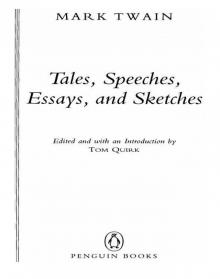 Tales, Speeches, Essays, and Sketches
Tales, Speeches, Essays, and Sketches A Connecticut Yankee in King Arthur's Court, Part 9.
A Connecticut Yankee in King Arthur's Court, Part 9. Our Fellow Savages of the Sandwich Islands (version 1)
Our Fellow Savages of the Sandwich Islands (version 1) 1601
1601 Letters from the Earth
Letters from the Earth Curious Republic Of Gondour, And Other Curious Whimsical Sketches
Curious Republic Of Gondour, And Other Curious Whimsical Sketches The Mysterious Stranger
The Mysterious Stranger Life on the Mississippi
Life on the Mississippi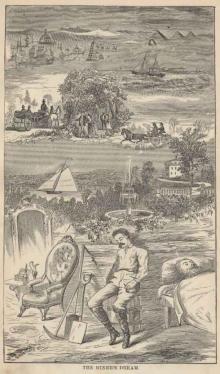 Roughing It
Roughing It Alonzo Fitz and Other Stories
Alonzo Fitz and Other Stories The 30,000 Dollar Bequest and Other Stories
The 30,000 Dollar Bequest and Other Stories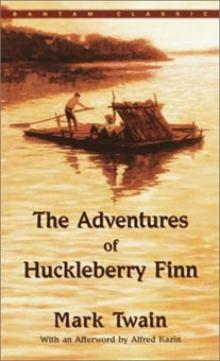 The Adventures of Huckleberry Finn taots-2
The Adventures of Huckleberry Finn taots-2 A Double-Barreled Detective Story
A Double-Barreled Detective Story adam's diary.txt
adam's diary.txt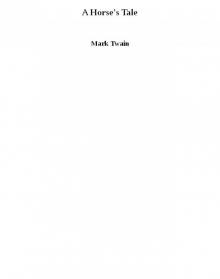 A Horse's Tale
A Horse's Tale Autobiography Of Mark Twain, Volume 1
Autobiography Of Mark Twain, Volume 1 The Comedy of Those Extraordinary Twins
The Comedy of Those Extraordinary Twins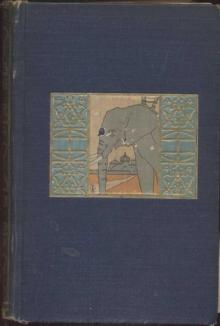 Following the Equator
Following the Equator Goldsmith's Friend Abroad Again
Goldsmith's Friend Abroad Again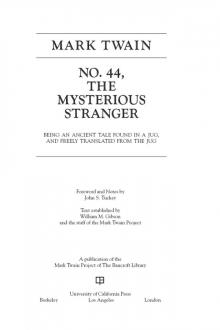 No. 44, The Mysterious Stranger
No. 44, The Mysterious Stranger The Stolen White Elephant
The Stolen White Elephant The $30,000 Bequest and Other Stories
The $30,000 Bequest and Other Stories The Curious Republic of Gondour, and Other Whimsical Sketches
The Curious Republic of Gondour, and Other Whimsical Sketches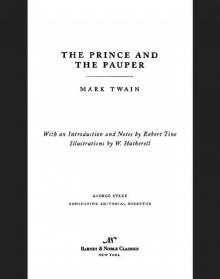 Prince and the Pauper (Barnes & Noble Classics Series)
Prince and the Pauper (Barnes & Noble Classics Series) The Portable Mark Twain
The Portable Mark Twain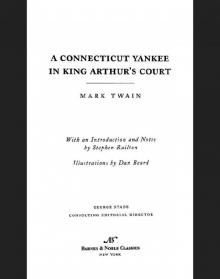 Connecticut Yankee in King Arthur's Court (Barnes & Noble Classics Series)
Connecticut Yankee in King Arthur's Court (Barnes & Noble Classics Series) The Adventures of Tom Sawyer taots-1
The Adventures of Tom Sawyer taots-1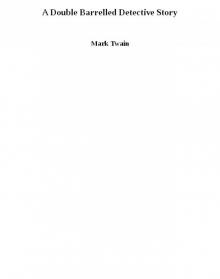 A Double Barrelled Detective Story
A Double Barrelled Detective Story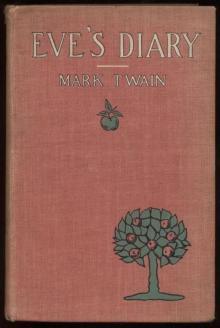 Eve's Diary
Eve's Diary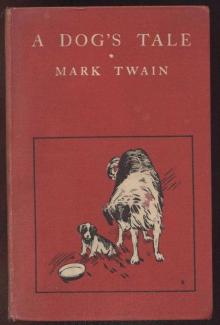 A Dog's Tale
A Dog's Tale The Mysterious Stranger Manuscripts (Literature)
The Mysterious Stranger Manuscripts (Literature) The Complete Short Stories of Mark Twain
The Complete Short Stories of Mark Twain What Is Man? and Other Essays
What Is Man? and Other Essays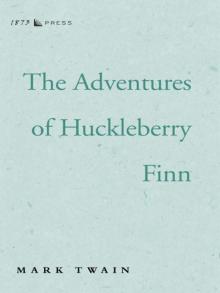 The Adventures of Huckleberry Finn
The Adventures of Huckleberry Finn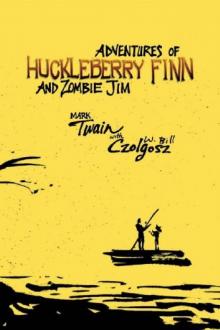 Adventures of Huckleberry Finn and Zombie Jim
Adventures of Huckleberry Finn and Zombie Jim Who Is Mark Twain?
Who Is Mark Twain? Christian Science
Christian Science The Innocents Abroad
The Innocents Abroad Some Rambling Notes of an Idle Excursion
Some Rambling Notes of an Idle Excursion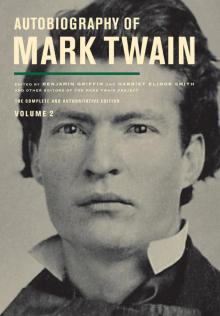 Autobiography of Mark Twain
Autobiography of Mark Twain Those Extraordinary Twins
Those Extraordinary Twins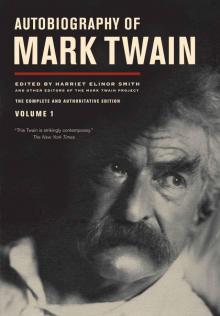 Autobiography of Mark Twain: The Complete and Authoritative Edition, Volume 1
Autobiography of Mark Twain: The Complete and Authoritative Edition, Volume 1